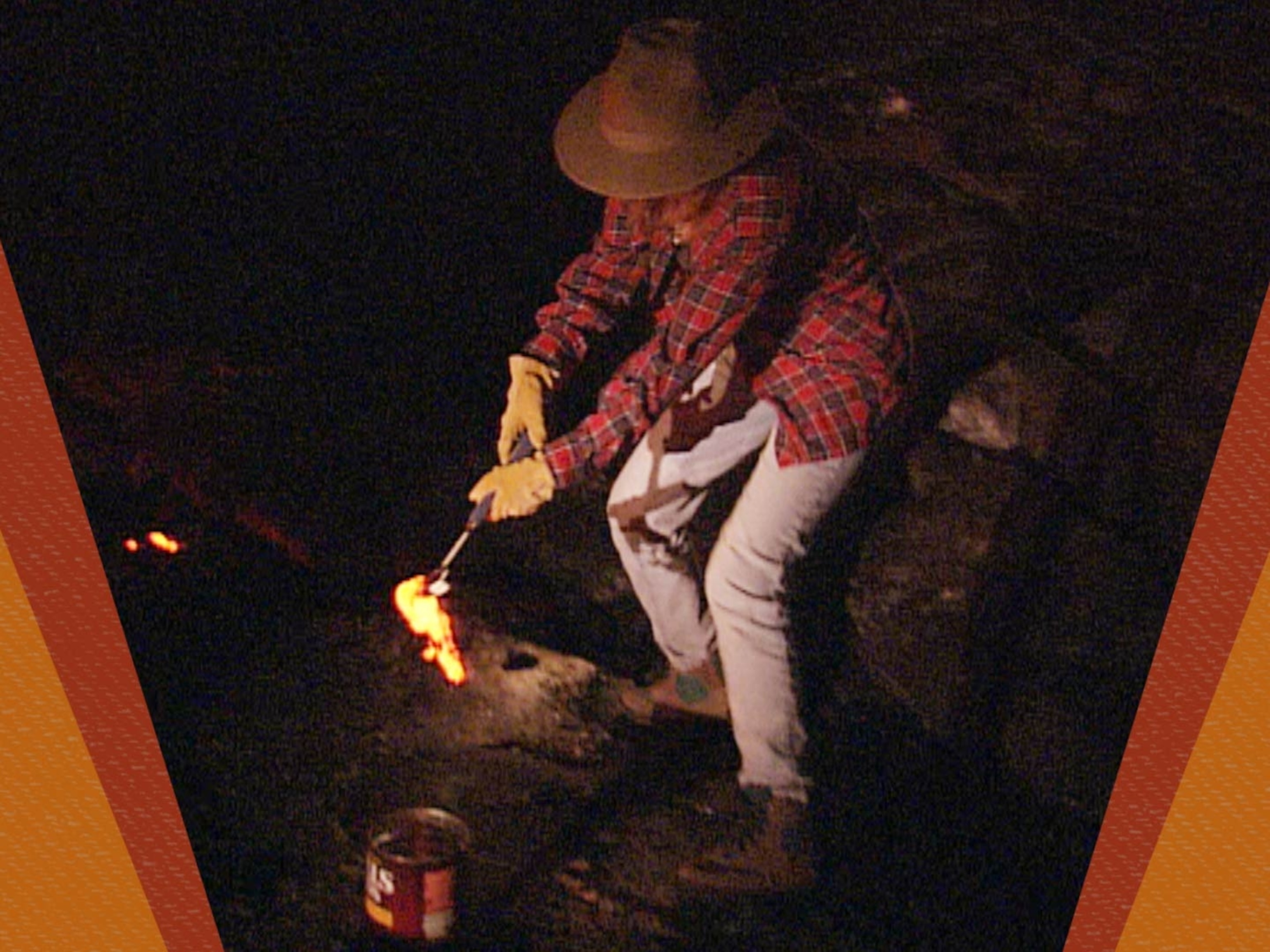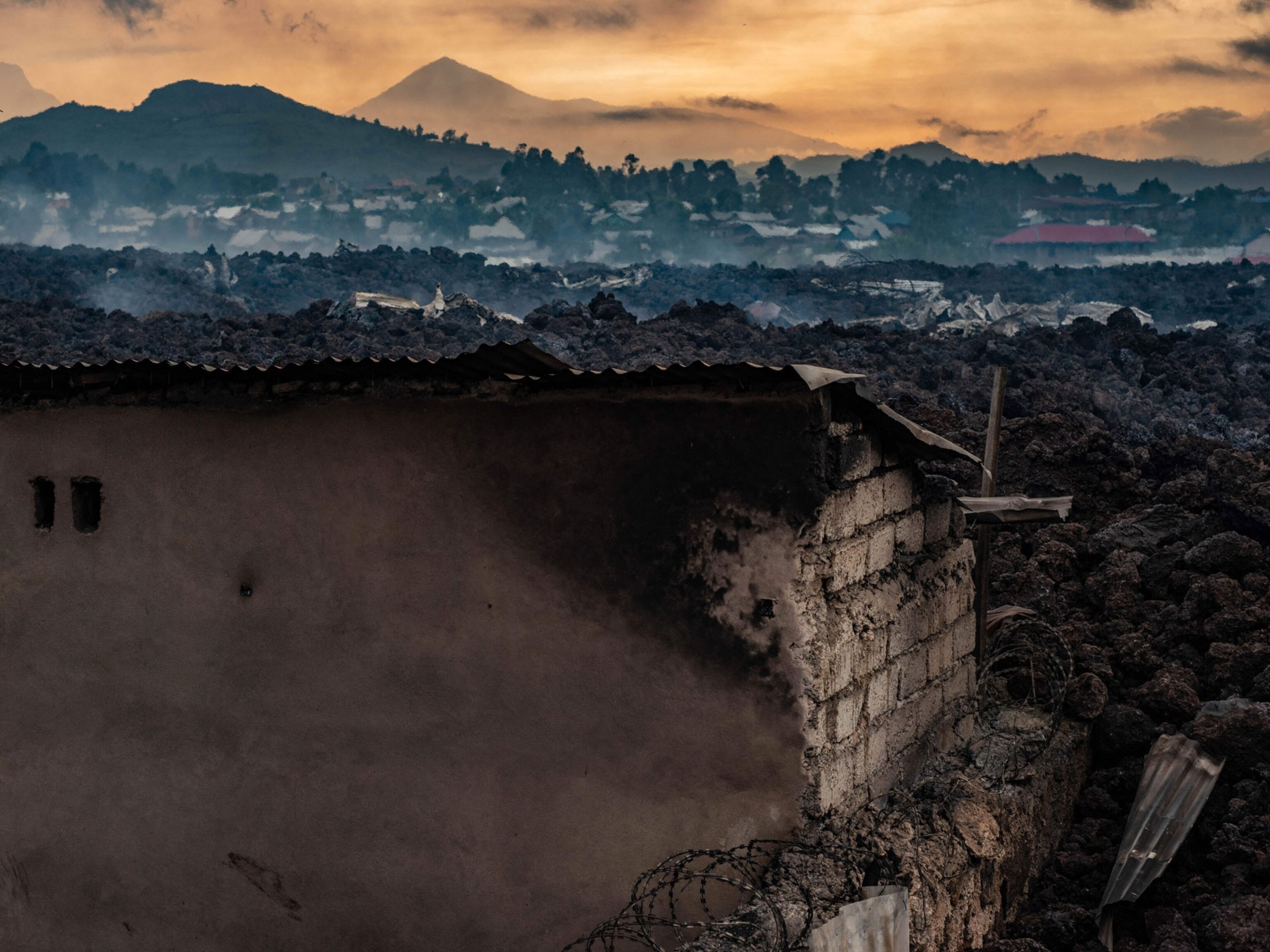
Stunning Nighttime Pictures of Chilean Volcano Erupting
Villarrica erupted earlier this week with a bang, spewing lava bombs and forcing the evacuation of thousands of people.
Villarrica, one of Chile's most active volcanoes, awoke with a vengeance this week, launching lava bombs and an ash cloud thousands of feet into the air. The nearby towns of Pucon and Conaripe were evacuated as a precaution.
This 9,330-foot-tall (2,850-meter) peak is known as a stratovolcano or a composite volcano, according to the Smithsonian's Global Volcanism Program. They're formed by an accumulation of lava and other debris shot out of cracks and craters during eruptions. (See stunning pictures of blue flames leaping from a volcano.)

A stratovolcano can have vents at its summit as well as along its flanks, and eruptions can occur through any one of them. More than 30 small cinder cones and vents dot the sides of Villarrica.
Major eruptions in 1985 and 1992 added lava layers and two new cones to Villarrica. Historical records of this volcano's eruptions go back to 1558. (Watch an underwater volcano form a new island near Japan.)

This week's eruption was characterized by so-called strombolian explosions, according to the Smithsonian. Caused by the sudden release of gases that have built up within a volcano, strombolian explosions result in spectacular fountains of lava and debris.
The ash clouds that balloon over these eruptions can also spawn lightning, thanks to the static electricity that builds up. (See lightning storms blossom over another Chilean volcano.)

These fireworks pose an additional potential hazard to the surrounding population in the form of mudslides and floods. Villarrica is covered with roughly 15 square miles (40 square kilometers) of glaciers, which are now being peppered with flaming chunks of melted rock. Rivers are rising as a result of the melting snow and ice, reports USA Today.
Follow Jane J. Lee on Twitter.
Related Topics
You May Also Like
Go Further
Animals
- Orangutan seen using plants to heal wound for first timeOrangutan seen using plants to heal wound for first time
- What La Palma's 'lava tubes' tell us about life on other planetsWhat La Palma's 'lava tubes' tell us about life on other planets
- This fungus turns cicadas into zombies who procreate—then dieThis fungus turns cicadas into zombies who procreate—then die
- How can we protect grizzlies from their biggest threat—trains?How can we protect grizzlies from their biggest threat—trains?
Environment
- What the Aral Sea might teach us about life after disasterWhat the Aral Sea might teach us about life after disaster
- What La Palma's 'lava tubes' tell us about life on other planetsWhat La Palma's 'lava tubes' tell us about life on other planets
- How fungi form ‘fairy rings’ and inspire superstitionsHow fungi form ‘fairy rings’ and inspire superstitions
- Your favorite foods may not taste the same in the future. Here's why.Your favorite foods may not taste the same in the future. Here's why.
- Are the Great Lakes the key to solving America’s emissions conundrum?Are the Great Lakes the key to solving America’s emissions conundrum?
- The world’s historic sites face climate change. Can Petra lead the way?The world’s historic sites face climate change. Can Petra lead the way?
History & Culture
- A short history of the Met Gala and its iconic looksA short history of the Met Gala and its iconic looks
- Meet the ruthless king who unified the Kingdom of Hawai'iMeet the ruthless king who unified the Kingdom of Hawai'i
- Hawaii's Lei Day is about so much more than flowersHawaii's Lei Day is about so much more than flowers
- When treasure hunters find artifacts, who gets to keep them?When treasure hunters find artifacts, who gets to keep them?
Science
- Why ovaries are so crucial to women’s health and longevityWhy ovaries are so crucial to women’s health and longevity
- Orangutan seen using plants to heal wound for first timeOrangutan seen using plants to heal wound for first time
Travel
- Why this unlikely UK destination should be on your radarWhy this unlikely UK destination should be on your radar
- A slow journey around the islands of southern VietnamA slow journey around the islands of southern Vietnam
- Is it possible to climb Mount Everest responsibly?Is it possible to climb Mount Everest responsibly?




